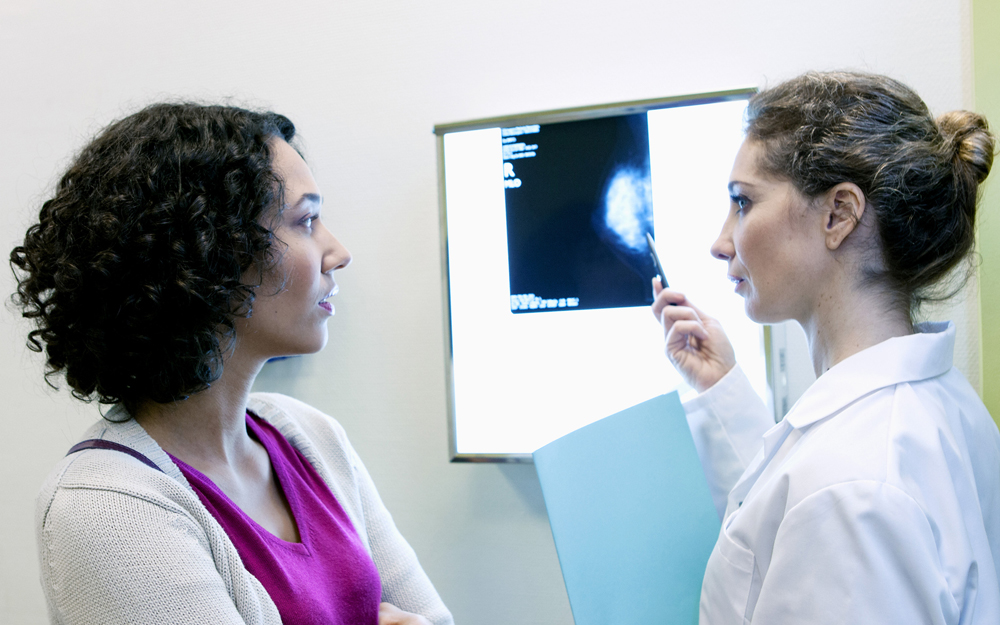Discoveries
The Present and Future of Breast Reconstruction
Oct 25, 2021 Nicole Levine

Breast cancer requires a constellation of choices from the moment of diagnosis. For some patients, their journey doesn’t feel complete even after there’s no trace of cancer in their bodies—and they choose breast reconstruction.
While some women opt out of this procedure, it is an important option for others.
“We know from many studies that breast reconstruction really does have a psychological benefit,” says Edward Ray, MD, a surgeon in the Breast Cancer Program and the Plastic and Reconstructive Surgery Center at Cedars-Sinai. “While it’s not 100% of patients, it is a very high percentage who experience a better sense of wellbeing if they go through breast reconstruction.”
While the potential offerings for reconstruction continue to grow, the technology pushing it forward is fixated on tiny, delicate work: building a microvascular network to feed a patient’s own tissue or even growing new tissue in a laboratory starting with a handful of cells.
“We know from many studies that breast reconstruction really does have a psychological benefit. While it’s not 100% of patients, it is a very high percentage who experience a better sense of wellbeing if they go through breast reconstruction.”
Tailored Approach
Breast implants first became available in the early 1960s and about 80% of women today choose this option, Ray says.
“The thing that’s changing the most about breast reconstruction is that the options are growing,” Ray says. “It’s not that we’re simply improving techniques, it’s that we’re developing new techniques that may offer options to those who didn’t have any choices available for reconstruction before. But there’s definitely no one-size-fits-all approach.”
One alternative to breast implants that is growing in availability and popularity is autologous reconstruction: using tissue from elsewhere in the body to sculpt a new breast. One of the early problems when implants were first used after mastectomy was that scar tissue from cancer treatment could interfere with the shape of the breast. Surgeons first addressed this using muscle and skin from a patient’s back.
A newer technique uses skin and belly fat from the lower abdomen that is rich in blood vessels to feed the tissues. This makes an implant unnecessary and is a good option for patients who, for example, don’t want to have to eventually replace implants.
In Discoveries: Breast Cancer Has No Gender
"It’s your own skin and your own fat," Ray says. "It will grow and shrink with you. It’s alive and part of you. That’s a powerful thing."
The first surgeries of this kind required moving muscle along with other tissue, requiring longer recovery and sometimes complications at the former muscle site. The newest iterations of this surgery don’t require moving muscles, and instead simply detach the tissue from one area of the body and reattach it where it’s needed.
"Arguably one of the biggest advancements is called a perforator flap," Ray says. "Instead of taking a whole muscle from the abdominal wall and leaving you with a weakness in your core, you can transfer all the little blood vessels from under the muscle and leave the muscle there."
Leaving the abdominal muscles intact has improved outcomes in autologous breast reconstruction and reduced recovery time.
"The thing that’s changing the most about breast reconstruction is that the options are growing. It’s not that we’re simply improving techniques, it’s that we’re developing new techniques that may offer options to those who didn’t have any choices available for reconstruction before. But there’s definitely no one-size-fits-all approach.”
Quest to Grow New Tissue
In the laboratory, Xiaojiang Cui, PhD, is taking a different approach to reconstruction: regrowing the tissue from stem cells.
"We’re at a stage where we can generate mini-breast tissue in a dish" says Cui, a research scientist in the Department of Surgery and Cedars-Sinai Samuel Oschin Comprehensive Cancer Institute.
"Our idea is to discover whether we can use the patient’s own breast tissue and their stem cells to regenerate the mammary tissue and the fat cells,” he says. “That’s our dream and ultimate goal."
His team is trying two routes. The first uses induced pluripotent stem cell technology—wherein mature cells from the body can be reprogrammed to become a stem cell then developed into the kind of breast cell needed.
"We can actually make these breast cells form a mammary-like structure in a dish," Cui says. "It’s what we call a mammary-like organoid."
The second approach uses breast tissue that was removed as part of a mastectomy to create similar organoids. Using these cells results in an organoid that mimics the ductal and alveolar structure of the breast.
Currently, these mini-tissues are used in research to better understand why breast cancer develops and to test potential therapies.
"We can generate a personalized breast tissue model to really study the risk factors and each individual’s biology," Cui says. "We can study the effect of specific gene mutations on human breast function. There are many possibilities."
One surprising obstacle to creating complete breast tissue in the lab: Fat cells are difficult to grow in a dish.
"Imagine you could develop this fat architecture with blood vessels embedded in it, then you could transplant the whole thing, this scaffold, into the human mammary gland. That would be the major achievement," Cui says.
This kind of lab-constructed tissue that combines fat, blood vessels and other important structures would be useful not only for breast reconstruction, but for a range of repairs to the body.
"If we develop vascularized tissue that we can then transplant into the body?" Ray says. "That could be the future of organ transplantation. It would be one the medical discoveries of the century."


